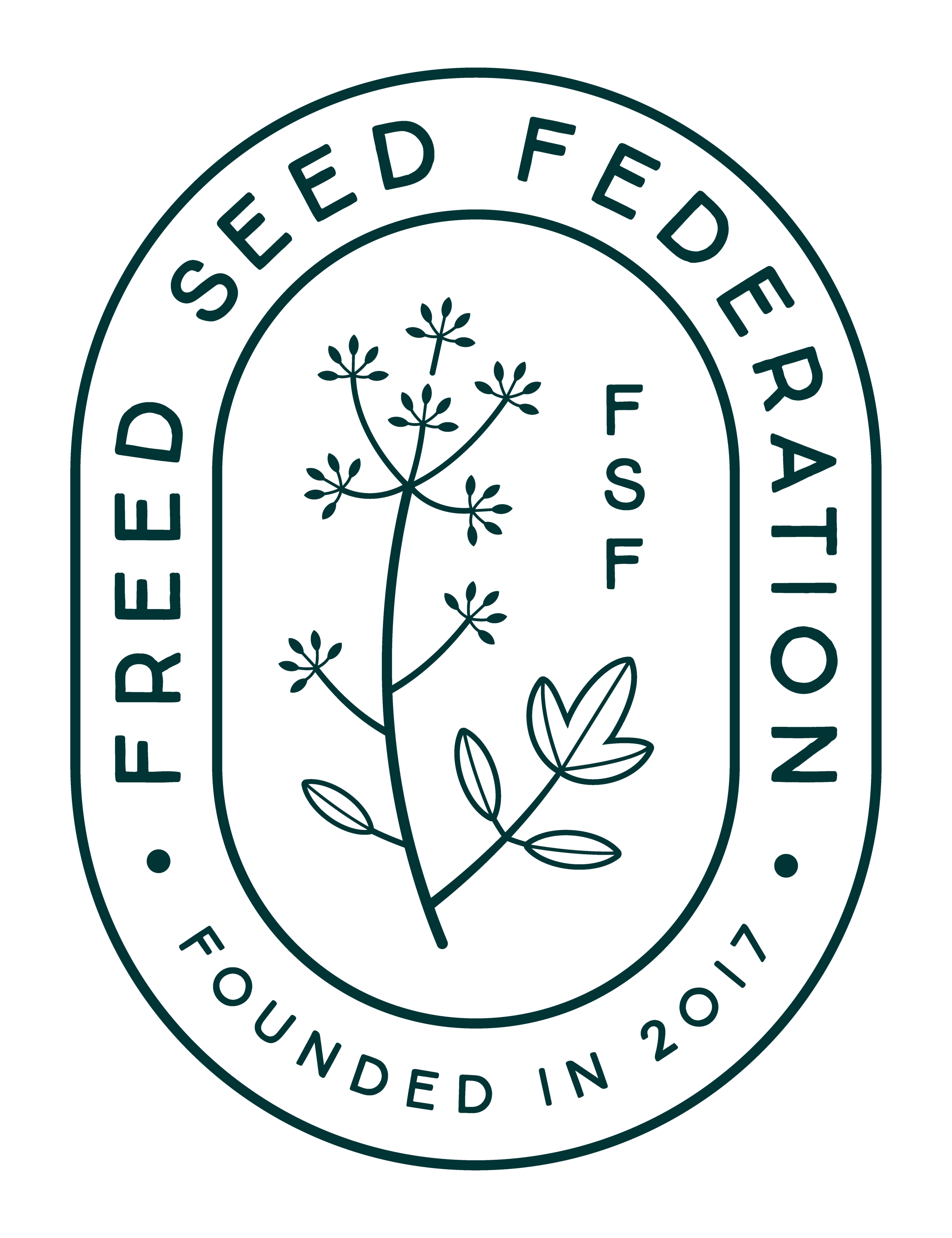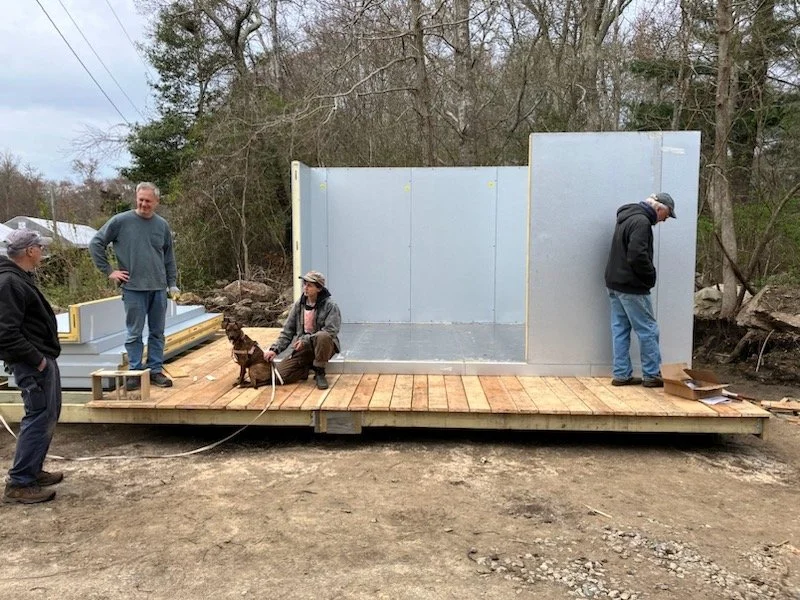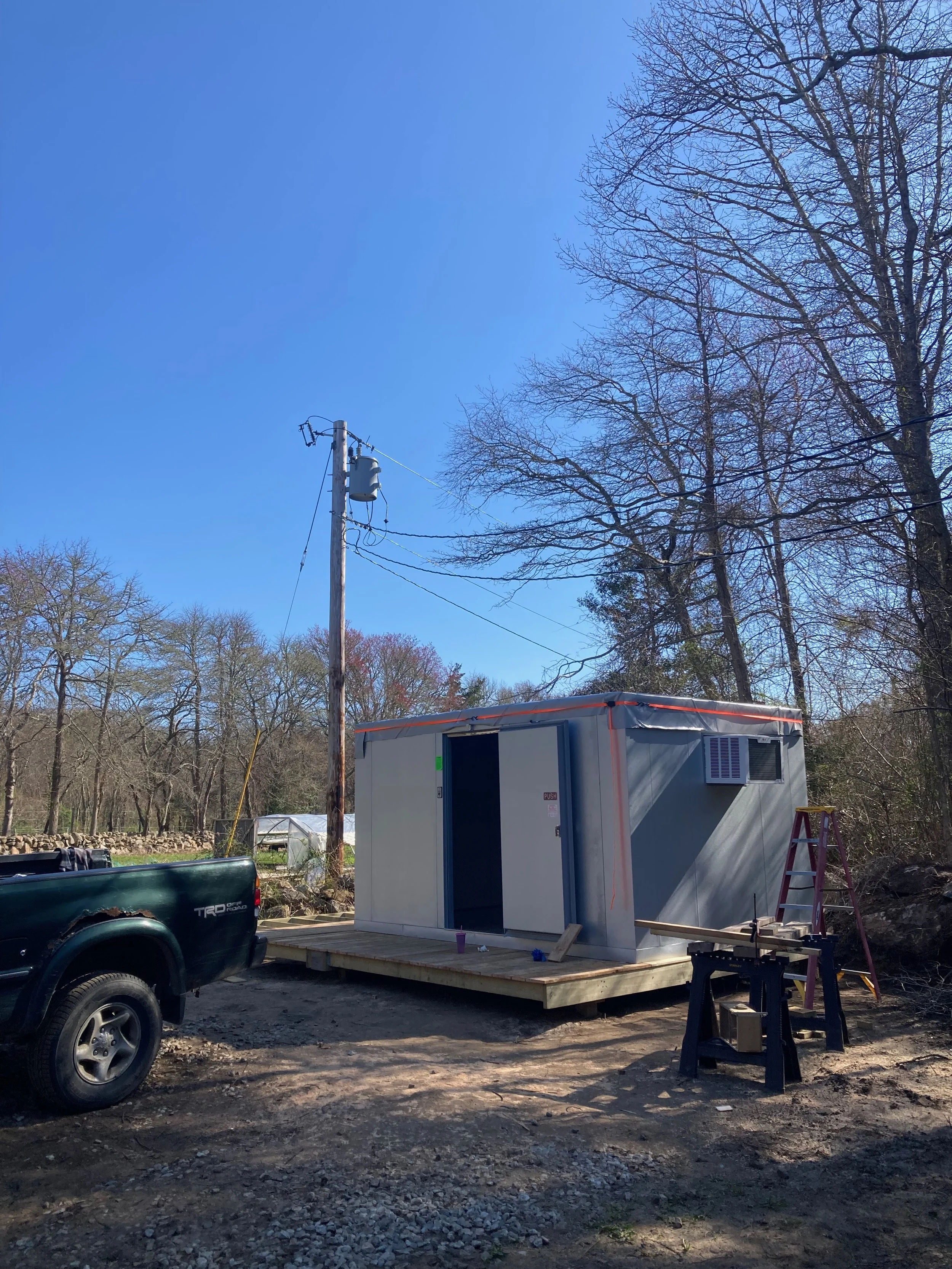In the spring of 2024 we began work on the construction of a “seed vault.” Born out of the simple need to properly store the seeds in our custody and protect them from temperature, moisture, and predation, we envision the functionality of this storage space as a hybrid between a seed bank and a seed library.
In a seed bank model, seeds are typically grown as little as necessary to ensure their genetics evolve as little as possible—the idea being to “freeze in time” important traits that may disappear with the variety itself. While this model is important, accessibility and ongoing adaptability can be a significant challenge.
In a seed library model, seeds are freely distributed to local communities; ideally seeds are withdrawn, and at the end of the season, new seed is returned. The circularity and community-centeredness of the model is crucial. However, in practice, most seed libraries are dependent upon donations from seed companies to ensure annual availability; and often, skillset education for seed stewardship is lacking or entirely absent.
Our approach to seed storage with a seed vault seeks to elevate the best components of these two models: safe long-term storage combined with community accessibility and participation. We also provide this service for individual and community partners, either for those who lack access to proper storage or to spread risk of seed loss due to multiple sites.


